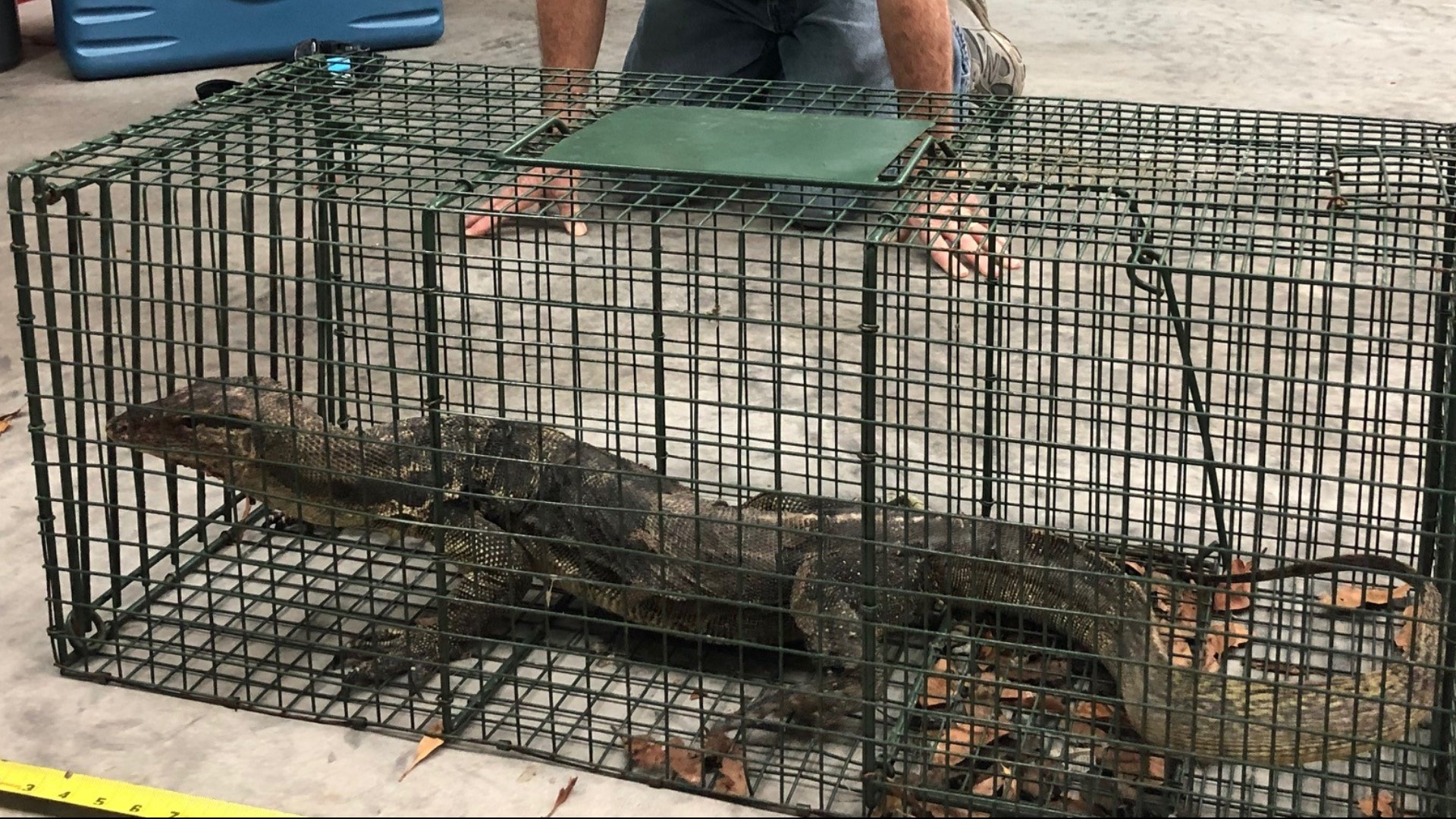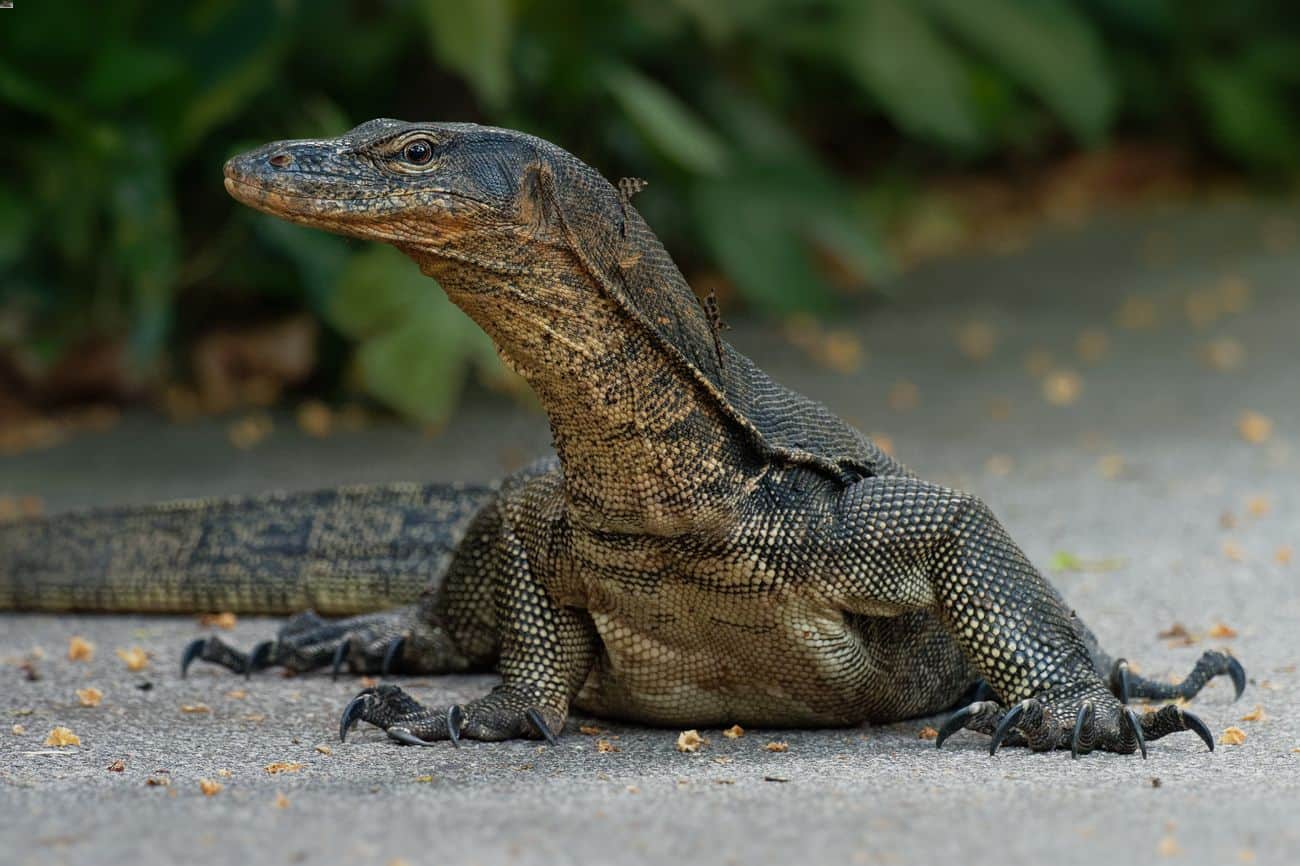Asian Water Monitor in Florida

Asian water monitor florida – The Asian water monitor (Varanus salvator) is a large, semi-aquatic lizard native to Southeast Asia. It has been introduced to Florida and has become an invasive species, posing a threat to native wildlife.
The Asian water monitor, a formidable reptile native to Southeast Asia, has made an unwelcome appearance in Florida. Its presence has raised concerns among wildlife experts, who fear its potential impact on native species. While the water monitor’s status in Florida remains uncertain, the recent Florida Georgia Line break up has cast a spotlight on the state’s environmental challenges.
As the dust settles on the musical duo’s split, it’s imperative to address the ongoing threat posed by invasive species like the Asian water monitor, ensuring the preservation of Florida’s delicate ecosystem.
Current Distribution and Population
The Asian water monitor is now found in several counties in southern Florida, including Miami-Dade, Broward, and Palm Beach. The population is estimated to be in the thousands, and it is continuing to grow.
The Asian water monitor lizard is an invasive species in Florida, posing a threat to native wildlife. Invasive species often thrive in disturbed habitats, highlighting the importance of conservation efforts. However, it’s also essential to stay informed about financial assistance programs like supplemental security income news , which can provide support for those facing financial challenges.
As we address environmental concerns, we must also ensure the well-being of our communities.
Physical Characteristics and Behavior
The Asian water monitor is a large lizard, with adults reaching lengths of up to 6 feet. It has a long, muscular body with a long tail. The head is triangular, with large eyes and a powerful jaw. The skin is covered in scales, which are typically dark brown or black with yellow or white spots.
The Asian water monitor is a semi-aquatic lizard and spends much of its time in water. It is an excellent swimmer and diver and can stay submerged for up to 30 minutes. It is also a skilled climber and can often be seen basking on branches or rocks.
Asian water monitors are fearsome predators that have found a home in Florida’s waterways. Their size and strength make them a threat to native wildlife, but they also play a role in the ecosystem. The Los Angeles Lakers have a new head coach this season, and he’s hoping to lead the team to a championship.
Like the Asian water monitor, the new coach brings a unique set of skills and experience to his new role, and he’ll need to use all of them to succeed. Back to the Asian water monitor, it’s important to remember that these animals are not pets.
They are wild creatures that can be dangerous, and they should be treated with respect.
Ecological Impacts
The Asian water monitor is a voracious predator and eats a wide variety of animals, including fish, frogs, snakes, birds, and small mammals. It has been known to prey on native wildlife, such as the American alligator and the Florida panther. The introduction of the Asian water monitor to Florida has had a negative impact on native wildlife populations.
Threats and Management of Asian Water Monitors: Asian Water Monitor Florida
The introduction of Asian water monitors to Florida has raised concerns due to their potential impact on native ecosystems and human populations. Understanding the threats they pose and implementing effective management strategies is crucial for mitigating their negative effects.
Threats to Native Ecosystems
- Competition for Resources: Asian water monitors are opportunistic predators that compete with native predators for food sources, including fish, amphibians, reptiles, and small mammals.
- Predation on Native Wildlife: They prey on a wide range of native species, including birds, reptiles, amphibians, and small mammals, potentially disrupting ecosystem balance.
- Alteration of Habitats: Asian water monitors can modify habitats by creating burrows and altering shorelines, potentially affecting the availability of resources for native species.
Threats to Human Populations
- Potential for Disease Transmission: Asian water monitors can carry parasites and diseases that can be transmitted to humans through contact or consumption of contaminated water.
- Aggressive Behavior: While typically shy, Asian water monitors can become aggressive if cornered or threatened, posing a potential risk to humans.
Management and Control, Asian water monitor florida
- Early Detection and Rapid Response: Monitoring for the presence of Asian water monitors and implementing rapid response measures, such as trapping or removal, is crucial to prevent their establishment.
- Habitat Modification: Modifying habitats to make them less suitable for Asian water monitors, such as removing dense vegetation or altering shorelines, can help reduce their populations.
- Public Education and Outreach: Raising awareness about the threats posed by Asian water monitors and encouraging responsible behavior, such as avoiding feeding them or releasing pets into the wild, can help prevent their spread.
Legal and Ethical Considerations
Managing invasive species like Asian water monitors involves complex legal and ethical considerations. Balancing the need to protect native ecosystems and human health with animal welfare concerns is essential. Ethical considerations include ensuring humane and responsible methods of population control and respecting the intrinsic value of all species.
Conservation and Education

The conservation of native ecosystems is paramount in the face of invasive species like Asian water monitors. These non-native predators disrupt the ecological balance, threatening the survival of native species. Protecting these ecosystems requires multifaceted efforts, including the control of invasive species populations and the education of the public about their detrimental effects.
Successful conservation efforts have been implemented to manage Asian water monitor populations. In Florida, targeted removal programs have effectively reduced their numbers in sensitive areas. These programs involve the strategic trapping and removal of individuals, with careful consideration given to the well-being of native species and the overall ecosystem.
Education and Outreach
Education and outreach play a crucial role in preventing the spread of invasive species. By raising awareness about the threats posed by Asian water monitors, individuals can take proactive steps to minimize their impact. Educational campaigns can inform the public about the importance of responsible pet ownership, preventing the release of non-native species into the wild, and reporting sightings of invasive species to the appropriate authorities.
Collaboration between conservation organizations, government agencies, and the community is essential for effective conservation efforts. By working together, we can protect native ecosystems and ensure the long-term health of our natural resources.
The Asian water monitor, an apex predator native to Southeast Asia, has established a significant presence in Florida’s subtropical ecosystem. Its adaptability and voracious appetite have raised concerns among conservationists, prompting the need for comprehensive management strategies to mitigate its potential impact on native wildlife.
Understanding the ecology and behavior of the Asian water monitor is crucial for developing effective conservation measures that balance the preservation of Florida’s biodiversity with the presence of this formidable reptile. More information on the Asian water monitor in Florida can be found here.
The Asian water monitor is a formidable predator, its keen eyesight and powerful jaws making it a top hunter in its ecosystem. But beyond the realm of nature, there are other pressing concerns for those in need of assistance. For the latest updates on supplemental security income news , stay informed to ensure that those who rely on this vital support receive the resources they deserve.
Returning to the realm of wildlife, the Asian water monitor’s adaptability and resilience continue to fascinate, showcasing the intricate balance of nature.